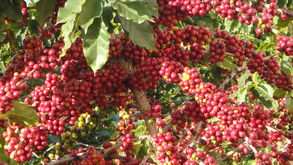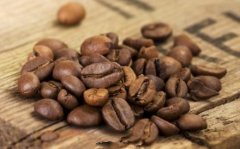A brief introduction to two kinds of names of Coffee Tree species
Almost all coffee with the best flavor is Arabica coffee beans. But Arabica species can be subdivided into different categories, and the coffee beans formed by all kinds of coffee trees are not necessarily very delicious. Think about it: apples alone are so different, just like the varieties of wine. Cabernet Sauvignon, Pinot Noir, Chardonnay and so on have their own advantages. Therefore, there is no doubt that different tree species are also one of the factors affecting flavor differences (other factors are climate, soil, growth altitude and treatment). Botanists usually regard artificially cultivated varieties and naturally mutated varieties as two different categories. In addition, under each major category, it is also subdivided into many varieties and subspecies of close relatives derived from a certain variety, which usually have special similarities in flavor. On the other hand, coffee professionals are not only the differences between them, these three categories are collectively referred to as "tree species", and the author also follows these practices to use these terms in this book.

At present, the world of boutique coffee is just beginning to market coffee beans with different "tree species". We most often see expressions such as "Bourbon and Typica in Manor An and Caturra and Catuai in Manor B". However, when drinking coffee, it is usually difficult to guess which coffee beans are made from which trees in Arabica.
In the world of coffee, there are polarized views on the issue of tree species: for boutique coffee lovers and traditional coffee lovers, the "old tree Arabica coffee beans" are naturally greatly loved and respected; however, for scientists, coffee farmers, and government executives in coffee-producing countries, the "new tree Arabica coffee beans", which usually have higher production capacity, are more supported by these people.
1. Old tree species or "Old" or Selected Varieties produced by natural selection: in fact, the so-called "old" tree species are not really old, but old trees evolve spontaneously. The mysterious forces of nature cause these naturally evolved coffee trees to suddenly appear in a manor one day, while people are sheltered by heaven's blessing. Only the fruits and seeds of these varieties need to be specially selected for preservation and continue to breed, some of which are the most famous species such as Moka or Mocha in Isobiya and Yemen, Typica and Bourbon, which are popular throughout Latin American coffee producing countries, Blue Mountain in the Caribbean, and Sumatra in Indonesia. But one of the most powerful natural variants is the elephant bean tree (Maragogype), which first appeared in Brazil around 1870. It produces very large coffee beans, but the average production capacity per tree is very low.
The more recent natural variation species are Mundo Novo, which appeared in 1920, Caturra, which appeared in 1935, and Catuai, which appeared in 1935. Among them, Kaddura species is generally welcomed by Central American coffee producing countries because of its short harvest period and high production capacity. compared with traditional old tree species (such as Dibica species), the coffee bean flavor of Kaddura species is relatively simple, simple and direct. for example, the flavor of Catuai species is more complex, and the picture shown in the cup is more complete.
two。 New tree species or "New" or Hybrid Varieties: for some fake connoisseurs, this topic is used to quarrel with scientists who improve the experiment. As a matter of fact, the new tree species are deliberately developed by artificial mixing, such as the most famous SL-28 tree species in East Africa, which is famous for its excellent flavor in the cup. However, new varieties of coffee trees with higher disease resistance or better environmental tolerance have also been developed in regions such as Colombia, Brazil, India and Kenya. these advantages can only be achieved with the help of the genes of other coffee plants (usually Robusta).
But in the category of new tree species, the only controversial focus is whether to master the performance of flavor and taste. Many coffee buyers claim that the large output of these new tree species can keep the production of coffee beans from falling too much, causing coffee farmers to suffer a loss of production, but the only loss is the performance of coffee beans in the cup. Of course, the authorities of coffee-producing countries who take the opposite position have refuted that it is understandable to sacrifice the quality of some cups based on the ecological protection and economic considerations of the new tree species.
Among all the improved tree species, the most hated is the Catimor species with Robusta pedigree. Compared with the traditional tree species, its cup performance is obviously much more insipid and simple, but there are exceptions, such as new tree species mixed with artificial technology in India (Kent Ken special) and Colombia (Variedad Colombia variety Colombia). Its coffee beans have a more complex performance in the cup, which is almost indistinguishable from traditional tree species.
3. Postscript: what is more disturbing than the first two is the genetically modified coffee tree (Genetically engineered). For example, in a private research lab in Hawaii, a tree is being developed that will not have caffeine from the beginning of its growth, and a tree that will grow all coffee fruits to mature at the same time in order to shorten the harvest time. We are still waiting to see when these genetically modified coffee beans will be approved. John Stiles, the researcher in charge of decaffeinated tree experiments, pointed out that he only reversed the genes responsible for producing caffeine in coffee trees, and that other genes that correspond to performance, flavor, and so on in the cup were not affected at all. If one day, this genetically modified decaffeinated coffee bean does appear on the market, as long as we have heard of it, we may be able to get it, and there is a group of people who can make objective judgments about the performance and flavor characteristics of the cup. however, as the old saying goes, the impact of GM experiments on the environment has been debated, and it is impossible for us to make these attempts.
Important Notice :
前街咖啡 FrontStreet Coffee has moved to new addredd:
FrontStreet Coffee Address: 315,Donghua East Road,GuangZhou
Tel:020 38364473
- Prev

The use of expired coffee powder
Although expired coffee powder can no longer be drunk, coffee has the effect of absorbing peculiar smell and can turn waste into treasure. The cooking pot at home has been used for a long time, inside and outside is full of greasy, but also has a peculiar smell. Put the expired coffee powder or boiled coffee grounds in the pot and roast it over the fire, and the greasy and smell in the pot will gradually disappear. An oven in which delicious food is often baked at home.
- Next

Five tips for making delicious coffee and how to improve the probability of making a cup of delicious coffee
Coffee quality: to comment on the quality of a cup of coffee, you should have an in-depth understanding of the basic information of coffee, such as the variety of coffee, the place of production and regional characteristics of coffee beans, the height of planting, the process of handling raw beans, bean age, purity, size and water content. However, such detailed information is usually not available, so taste and aroma become the final criteria, and experience becomes the conclusion of coffee.
Related
- Beginners will see the "Coffee pull flower" guide!
- What is the difference between ice blog purified milk and ordinary milk coffee?
- Why is the Philippines the largest producer of crops in Liberia?
- For coffee extraction, should the fine powder be retained?
- How does extracted espresso fill pressed powder? How much strength does it take to press the powder?
- How to make jasmine cold extract coffee? Is the jasmine + latte good?
- Will this little toy really make the coffee taste better? How does Lily Drip affect coffee extraction?
- Will the action of slapping the filter cup also affect coffee extraction?
- What's the difference between powder-to-water ratio and powder-to-liquid ratio?
- What is the Ethiopian local species? What does it have to do with Heirloom native species?

